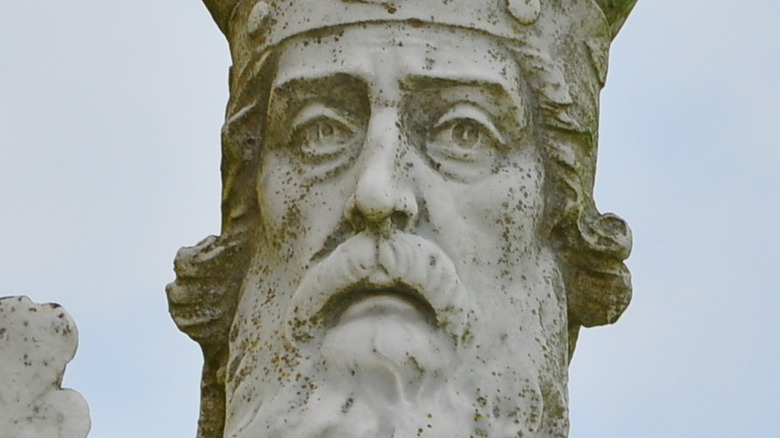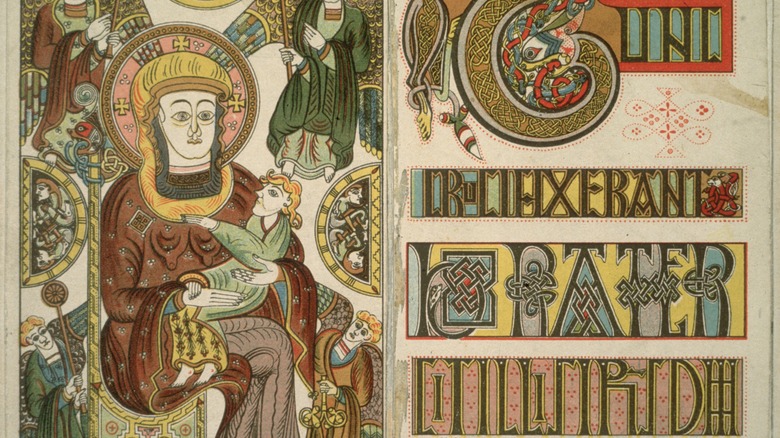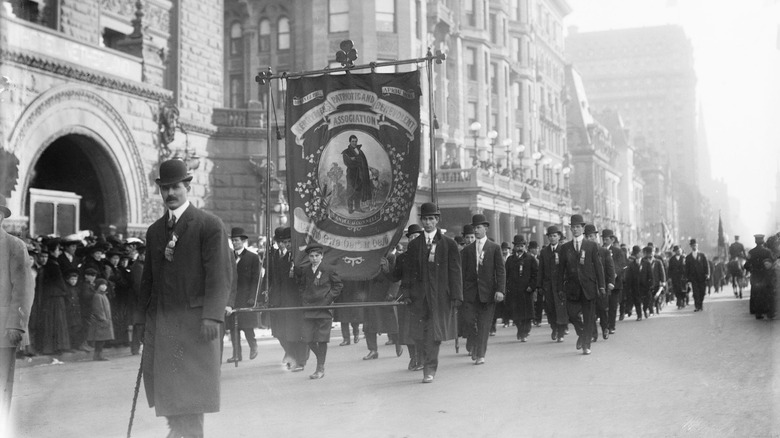When Was The First St. Patrick's Day Celebrated?
In the United States, St. Patrick's Day has become the central date to celebrate Irish heritage. You may have heard that St. Patrick's Day is a bigger celebration in America than it is in Ireland — but that's not entirely true. Sure, big parades and bar-hopping might be more of an American thing when it comes to observing St. Patrick's Day. But the holiday has also been important in Ireland for hundreds of years — well before America adopted it.
St. Patrick's Day celebrates a holy man who died over 1,500 years ago. As Biography reports, St. Patrick was born around A.D. 386, and is said to have died on March 17, 461. (That's why his feast day is celebrated on March 17 every year.) There are only a few sources documenting St. Patrick's life, but from what historians can piece together, he was born to a Roman family in Britain. At 16 years old, Patrick was captured by pirates and sold into slavery in Ireland. He spent the next six years in captivity, which only made his Christian faith grow stronger.
Patrick was able to escape slavery and return to his family in Britain. But Patrick's compulsion to spread Christianity throughout Ireland was so great that he later returned to the island. Starting in the 430s, Patrick took major steps to grow the once-small Christian community in Ireland. In addition to his real actions, Patrick is remembered for a few legendary ones — like supposedly driving all the snakes out of Ireland.
Ireland has been celebrating St. Patrick's Day for 1,100 years
In Ireland, legends surrounding Saint Patrick's life and his contributions to Christianity expanded in the centuries that followed his death. Despite Patrick's importance, he was never formally canonized as a saint by the Catholic Church. As IrishCentral points out, that's simply because no formal procedures for canonization existed until well after Patrick's death — but, like many others, he's venerated as a saint nonetheless.
Even so, it's natural that a figure as important as Patrick would eventually end up with his own holiday. According to History, Irish Christians began celebrating St. Patrick's Day around the 800s or 900s. The holiday was generally observed by attending Mass in the morning and celebrations in the afternoon. The Lenten ban on eating meat was temporarily lifted each St. Patrick's Day, per History, and celebrators would "dance, drink and feast–on the traditional meal of Irish bacon and cabbage." However, per TIME, it wasn't until 1631 that the Catholic Church formally recognized St. Patrick's Day as an official feast day.
After several hundred years as an Irish-only holiday, St. Patrick's Day found its way to the Americas. History notes that the first recorded St. Patrick's Day parade anywhere was actually in the Spanish settlement of St. Augustine, Florida, in 1601. The colony had an Irish vicar, Ricardo Artur, who decided to coordinate the parade.
The first St. Patrick's Day parade was in 1601, while the oldest yearly parade began in 1848
Today, the best-known St. Patrick's Day celebrations are the major parades in cities like New York City, Boston, Philadelphia, and Chicago. According to History, the oldest of these is Boston's, which first took place in 1737, followed by New York City's in 1762. Both parades were organized by "homesick Irish soldiers" who were stationed in America as part of the English military.
Those initial parades were successful, and demand for similar parades grew in the decades that followed. That was especially true in New York, where an influx of Irish immigrants led to a growth in Irish patriotism across the city. So, in 1848, several Irish cultural groups decided to combine their individual parades to form a single official New York City St. Patrick's Day Parade. Today, as another History article reports, that parade is the oldest continuously-running civilian parade in the world, and the largest one in America, with over 150,000 participants. (While Boston's parade had an earlier debut, it didn't become a yearly tradition until after New York City's did.)
Most cities had to cancel their 2020 and 2021 St. Patrick's Day parades due to the COVID-19 pandemic. But, this year, cities like New York are finally bringing the parades back. That just goes to show: You can't suppress an 1,100-year-old holiday for very long.


